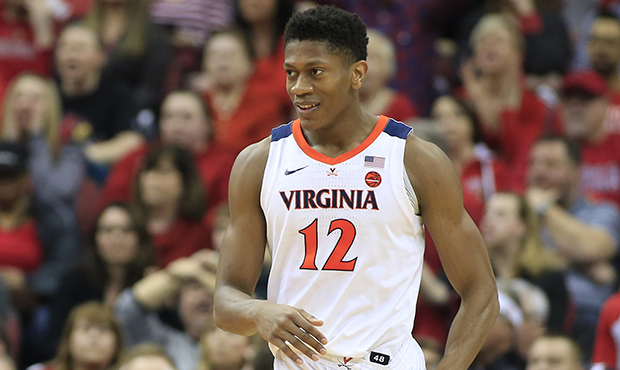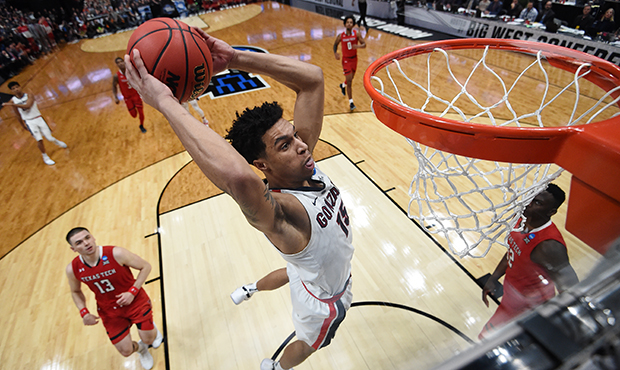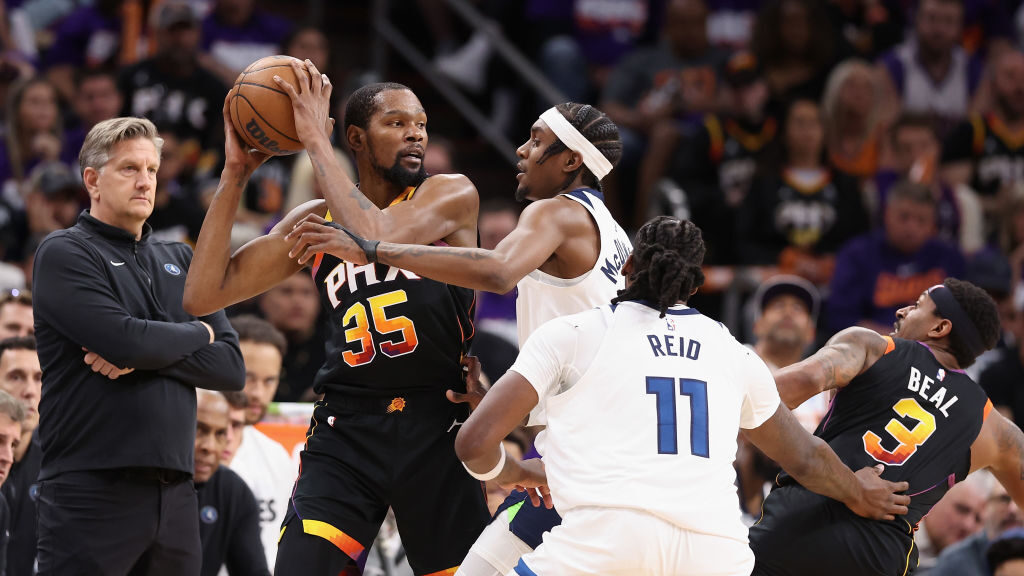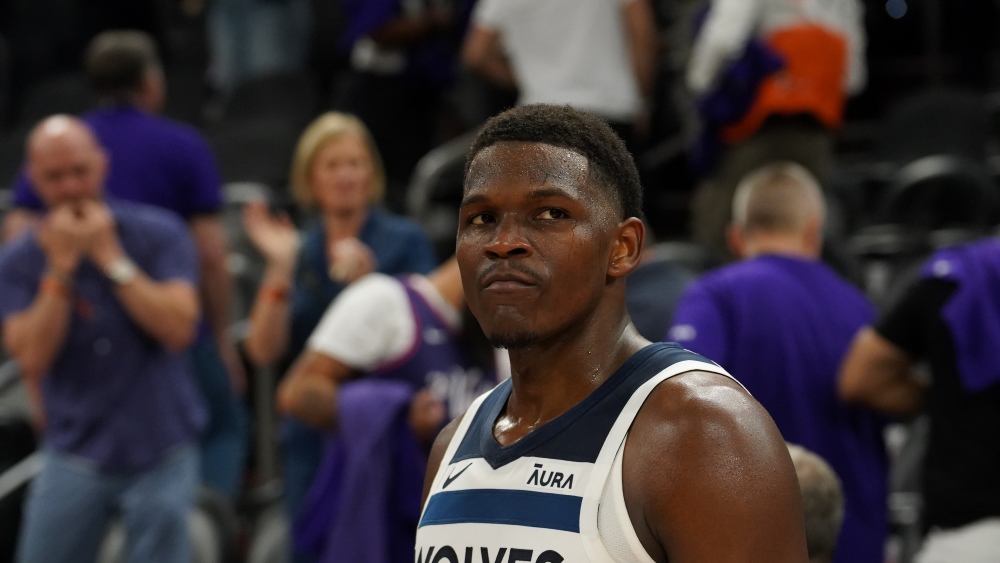Rhythm or pace: Darius Garland, Coby White top PG options for Suns at No. 6
Jun 14, 2019, 6:57 AM
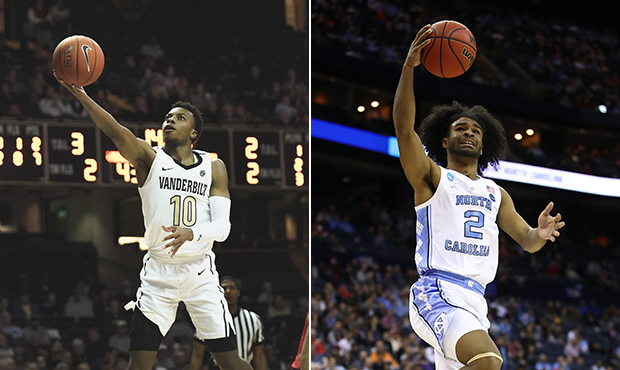
(Vanderbilt University) (Getty Images)
(Getty Images)
If the Phoenix Suns have the evaluation as tight as some mock drafts do for Vanderbilt point guard Darius Garland and North Carolina guard Coby White, the choice might come down to how they stylistically want their young point guard to play.
That’s because both point guard prospects, well, aren’t point guards.
Garland’s biggest weakness is keeping the flow of the offense balanced in his own game, which is filled with questionable decisions, while White is a maniacal loose cannon with the ball.
As it turns out, that correlates to what the two do the best. Garland’s rhythm in the halfcourt can be terrific at times while White’s speed with the ball in his hands is tremendous.
That decision for the Suns, as every decision they make should be influenced by, should come down to which of the two they feel would most benefit Devin Booker and Deandre Ayton.
Garland, who you can find our breakdown of here, is all about holding onto the ball and using his rhythm to read the way defenses move. His strengths of shooting off the dribble and maneuvering through tight angles in pick-and-rolls with a strong burst add up to a lethal scoring lead guard.
Anyone getting @vanexel31 vibes from @dariusgarland22!?!
🎥: @Mike_Schmitz #LakeShow pic.twitter.com/rt6SWmGIeD
— Audel Del Toro (@AudelDelToro) June 2, 2019
Garland would theoretically help Booker by giving him possessions off, but also providing opposing defenses with another guy to worry about. Both Booker and Garland profile as plus-shooters, meaning they can space the floor for each other naturally.
Ayton, actually, would be more of a help to Garland himself. While Garland isn’t going to set up many post possessions for Ayton, his ability in ball screen situations combined with Ayton’s rim-running gravity makes defenses pick between the impossible. If a defender is a half-step off Garland to help on Ayton, he’s pulling that jumper immediately.
Imagine a set like this with Booker as the guy on the quick dribble handoff with the threat of an Ayton ball screen looming too.
Play aggressive on Garland and — one can hope at least — he makes the pass to Ayton or one of the three other players. For a finisher like Ayton around the rim, things open up for him by default due to Garland’s skill of shaking off his initial defender.
You’ll notice my subtle shot at Garland: hoping he makes the pass to Ayton. Based on the impossibly small sample size of film available for Garland, it’s anyone’s guess if he can be a playmaker for his teammates, but there are reasons to be skeptical off of the four games of Vanderbilt tape.
And those four games, we should add, are only because of a meniscus injury that saw him miss the entire season. Teams will have to be sure Garland is back 100% from before June 20.
White, however, has real passing talent and the size (6-foot-5) to create more angles, something Kevin Zimmerman brought up here.
Easy to picture this going to the big fella, eh?
going back through some coby white clips. this is a really difficult pass to make. keeps dribble live and eyes up and throws it one handed, with tempo, over the trap pic.twitter.com/aqCqb5v8nX
— ricky scricca 🏀☕️ (@scricca1) June 4, 2019
The issue is trusting the aforementioned maniacal loose cannon in White to consistently see those.
Pretty good single-possession encapsulation of Coby White. Splits the D then launches himself into two defenders at the rim with Cam Johnson open one pass away pic.twitter.com/KdkNfDvWbD
— Max Carlin (@maxacarlin) May 29, 2019
Like Garland, White has got some flamethrower potential as a scorer. Not quite on Garland’s level in scoring in every area of the floor, but he’s a willing participant in the stepback revolution.
To me, White isn’t as big of a help to Booker compared to Garland. He has a tendency to get caught up once he splits a pick-and-roll coverage, not slowing down once he gets going.
It’s hard to imagine White, even as a combo next to Booker, allowing the rhythm of an offense to stay consistent enough as a lead guard. He’d have to learn how to pick his spots when all he does is pick every spot because it’s go-go-go for him.
If that doesn’t come across well enough, check out a section of Mike Schmitz’s breakdown for ESPN below with more on why White’s “point guard polish” is his biggest weakness.
To go back to the assumption that it could be a close call between Garland and White as the better prospect, as you might be able to tell, I don’t believe that’s even the case.
The Vanderbilt product makes more sense when projecting what exactly he is in the NBA, and that’s what it comes down to when we are talking about two similar player archetypes. They are scoring point guards who are still figuring out how to play point guard.
It’s far easier for Garland to create space from defenders than White and Garland has more craft in doing so. Plus, when both get that space, Garland checks out as the better shooter, both in range and being able to take that shot anywhere on the court. It’s a push when it comes to game management and there’s an edge to White in size and defense, but what exactly are we drafting these guys this high for, again? Right, not that.
And that’s ultimately what makes this such a difficult spot for the Suns to land in this specific draft. If one of Garland or White was more a floor general whose accompanying attributes were either shooting or defense, it would be a no-brainer.
But that’s not what Garland and White are so it’s not a no-brainer, and neither is the choice as a whole of what Phoenix does with the pick, whether that’s trading up, trading down or getting rid of it as a whole. Hey, at least there’s some drama for the night, right?





